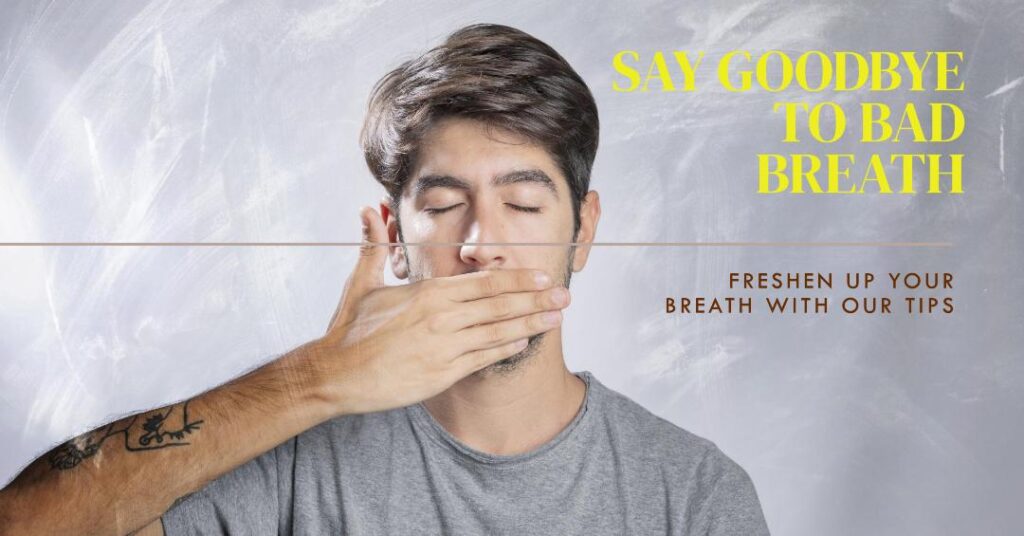
Understanding Bad Breath: Causes, Prevention, and Solutions
Bad breath, medically known as halitosis, is a common condition that affects millions of people worldwide. While it is often temporary and harmless, persistent bad breath can indicate underlying oral health or medical issues. This article explores the causes of bad breath, tips for prevention, and effective treatment options to help you maintain fresh breath and confidence.
What is Bad Breath?
Bad breath occurs when unpleasant odors are emitted from the mouth. It can range from mild and temporary — due to foods like garlic or onions — to chronic and more severe, often resulting from oral hygiene issues or medical conditions.
Common Causes of Bad Breath
Several factors contribute to bad breath, including:
Poor Oral Hygiene: Inadequate brushing and flossing allow food particles to remain in the mouth, leading to the growth of odor-producing bacteria.
Food Choices: Certain foods, such as garlic, onions, and spicy dishes, contain strong-smelling compounds that can linger in the mouth and bloodstream.
Dry Mouth (Xerostomia): Saliva helps cleanse the mouth and remove debris. A lack of saliva can result in bad breath, often noticeable in the morning.
Tobacco Use: Smoking and chewing tobacco leave an unpleasant odor and increase the risk of gum disease, a common cause of halitosis.
Gum Disease: Bacterial buildup in the gums, often due to plaque, can cause persistent bad breath.
Medical Conditions: Conditions like sinus infections, acid reflux, diabetes, and liver or kidney problems can contribute to bad breath.
Signs and Symptoms of Bad Breath
It’s not always easy to detect your own bad breath, but common signs include:
A persistent foul odor from the mouth.
A dry or sticky feeling in the mouth.
A bad taste that doesn’t go away after eating or brushing.
Comments from others about your breath.
How to Prevent Bad Breath
Maintaining fresh breath is achievable with proper oral care and healthy habits. Here are some tips:
Practice Good Oral Hygiene:
Brush your teeth at least twice a day with fluoride toothpaste.
Floss daily to remove debris between teeth.
Clean your tongue using a tongue scraper or toothbrush.
Stay Hydrated: Drinking plenty of water helps stimulate saliva production and rinse away bacteria and food particles.
Chew Sugar-Free Gum: This can help increase saliva flow and reduce dry mouth.
Avoid Strong-Smelling Foods: Limit your intake of foods like garlic and onions if they cause persistent odors.
Quit Smoking: Avoid tobacco products to improve oral health and breath freshness.
Visit Your Dentist Regularly: Regular dental check-ups and cleanings help address plaque buildup and detect any underlying issues.
Treatment Options for Bad Breath
If bad breath persists despite good oral hygiene, consider the following treatments:
Professional Dental Cleaning: Removing plaque and tartar can address bacterial buildup contributing to bad breath.
Address Underlying Conditions:
Treat gum disease with scaling, root planing, or medications.
Manage medical conditions like sinus infections or acid reflux with your healthcare provider.
Antibacterial Mouthwash: Using a mouthwash recommended by your dentist can reduce bacteria and freshen breath.
Saliva Substitutes: For dry mouth, your dentist may recommend products that help stimulate or replace saliva.
When to See a Dentist or Doctor
If bad breath persists despite following preventive measures, it’s important to consult your dentist. Chronic halitosis may indicate an underlying dental or medical issue that needs attention.
Conclusion
Bad breath can be embarrassing and frustrating, but it is often preventable and treatable with proper care. By maintaining good oral hygiene, staying hydrated, and seeking professional advice when needed, you can keep bad breath at bay and enjoy greater confidence in your daily interactions. If you have concerns about persistent bad breath, don’t hesitate to schedule a dental visit to get to the root of the issue and find effective solutions.
